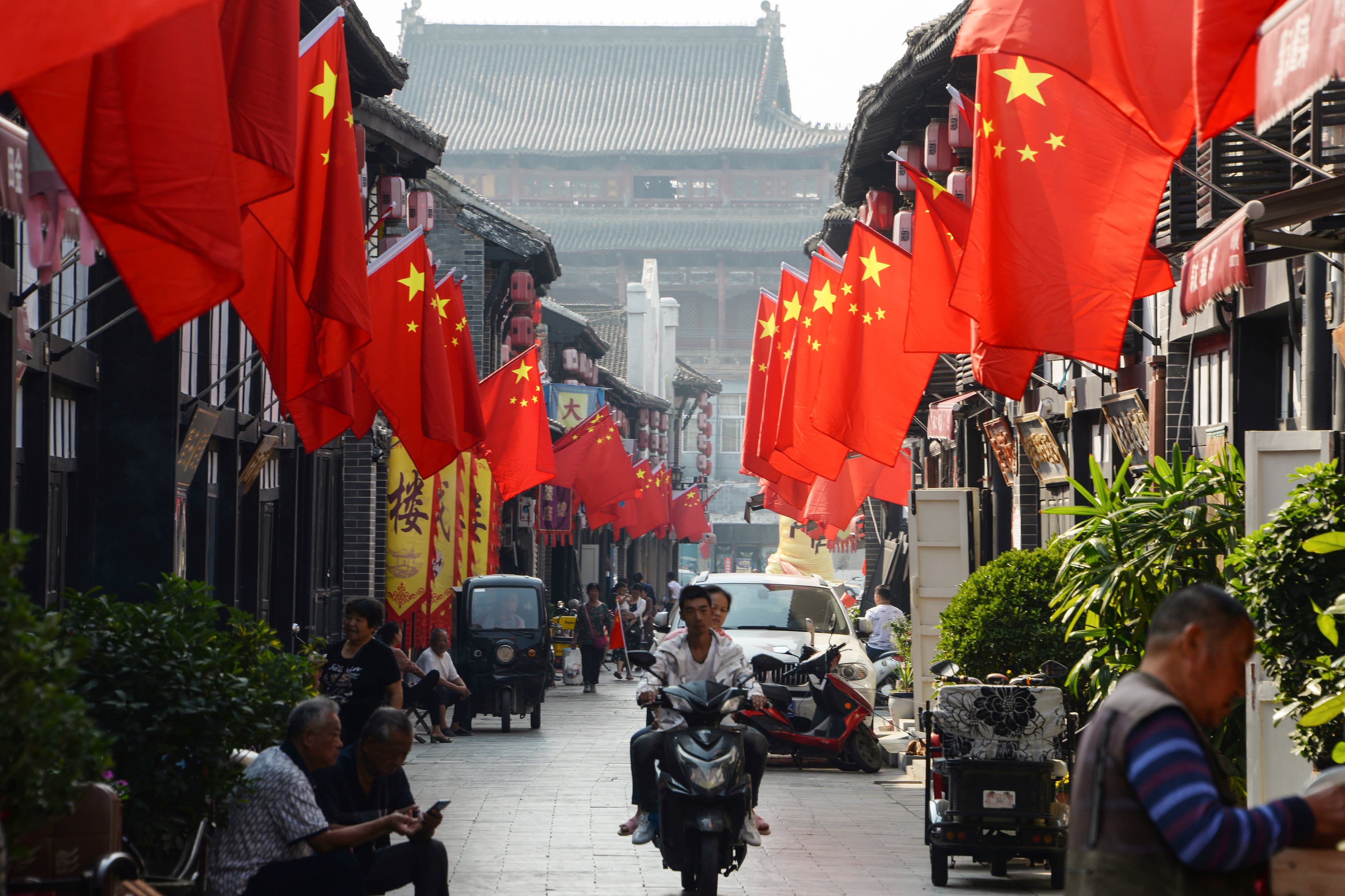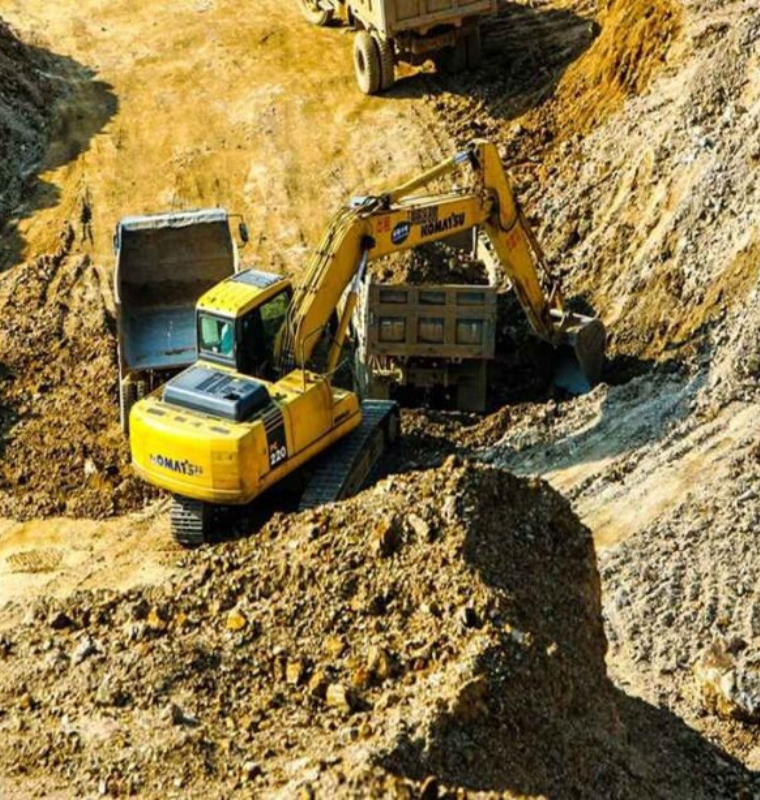China’s Economy Expands 4.8% in Q3 — Growth Meets Forecasts but Investment Collapse Raises Red Flags
China’s Economy Expands 4.8% in Q3 — Growth Meets Forecasts but Investment Collapse Raises Red Flags
By
Junia Wells
Last updated:
October 20, 2025
First Published:
October 20, 2025

China has announced in the past week a series of measures aimed at boosting its economy ahead of a key Politburo meeting later this week focused on reviewing the first half performance of the world’s second-largest economy. | Str | Afp | Getty Images
China’s economy grew 4.8% year-on-year in the third quarter of 2025, meeting market expectations but marking the slowest pace of growth in a year. While industrial output and exports showed resilience, the sharp drop in investment — particularly in real estate — has economists warning of a deepening slowdown that could weigh on future growth.
According to data from China’s National Bureau of Statistics, fixed-asset investment — which includes infrastructure, manufacturing, and real estate — unexpectedly declined by 0.5% in the first nine months of the year. This is the first contraction since 2020, during the height of the pandemic, and has been described by analysts as “rare and alarming.”
Growth Holds, but Momentum Is Fading
China’s 4.8% GDP growth in Q3 compares with 5.2% in the previous quarter, signaling a gradual cooling. Economists had anticipated this moderation due to ongoing weakness in the property sector and soft consumer spending.
Industrial production provided a bright spot, jumping 6.5% in September, outperforming forecasts of 5%. Manufacturing output, particularly in electric vehicles and high-end machinery, helped offset sluggishness elsewhere. However, analysts caution that this momentum is unlikely to fully counterbalance the drag from real estate and private investment.
Retail sales rose 3% in September, in line with expectations but down from 3.4% in August, underscoring fragile consumer confidence. Spending on home appliances — once a strong growth driver — slowed sharply to 3.3%, compared with a 25% surge in the year’s first three quarters, showing signs that government subsidy programs are losing steam.
The Investment Breakdown: Real Estate at the Core
The collapse in fixed-asset investment is now the biggest concern. Property investment plunged 13.9% in the year through September, a sharper drop than the 12.9% decline recorded through August. Economists say this deepening contraction signals that China’s real estate crisis is far from over.
“The weakness in real estate investment may persist for a much longer period than expected,” said one analyst. “It could be a structural shift — meaning property investment may never return to previous levels.”
Excluding real estate, fixed-asset investment rose just 3% in the first three quarters, down from 4.2% in August. Private sector investment outside the property market increased a mere 2.1%, further evidence of declining business confidence.
Experts attribute this caution to an uncertain policy environment, falling property values, and limited clarity on future reforms. As one economist put it, “The weakness in private investment reflects a deep lack of confidence in the economy’s long-term prospects.”
Consumers Spend Cautiously as Income Growth Slows
On the consumer front, spending continues to lag despite modest income gains. Urban residents saw real disposable income rise 4.5% in the first nine months of the year, while rural residents experienced a 6% increase. The urban unemployment rate inched down to 5.2% in September from 5.3% in August — a slight improvement, but still above pre-pandemic averages.
Eurasia Group’s Dan Wang noted that restoring consumer demand hinges on stabilizing the housing market: “Without a recovery in real estate, there’s little chance of boosting domestic consumption meaningfully.”
Deflation Pressures and Policy Inaction
Deflation remains another challenge. China’s headline inflation fell 0.3% in September, missing expectations, though the core inflation rate — excluding food and energy — rose at its fastest pace since February 2024. This divergence reflects weak overall demand alongside pockets of price pressure in specific sectors like services and technology.
Earlier this week, Beijing opted to keep its benchmark lending rates unchanged for the sixth consecutive month, maintaining the one-year loan prime rate at 3% and the five-year rate at 3.5%. The decision signals that policymakers are prioritizing financial stability over aggressive stimulus.
Beijing’s Balancing Act: New Industries vs. Old Foundations
China’s leadership has long aimed to reduce reliance on real estate and exports, pivoting instead toward domestic consumption and innovation. Yet, as the data shows, this transition is proving difficult.
Nomura’s chief China economist recently noted that “Beijing will likely need to clean up the property sector mess between 2026 and 2030.” Real estate still accounts for around 18% of local government revenues and nearly half of household wealth, making it too large to ignore.
Meanwhile, heavy investment in emerging industries — from electric vehicles to semiconductors — risks oversaturation. Analysts warn that overcapacity in these areas could lead to diminishing returns if demand fails to keep up.
The Road Ahead
China’s third-quarter performance underscores a paradox: headline growth remains respectable, yet the underlying drivers of that growth are weakening. The collapse in fixed-asset investment, ongoing property slump, and lukewarm consumer spending suggest that without decisive policy action, the world’s second-largest economy could be heading for a prolonged slowdown.
As Beijing’s top policymakers meet this week to set new five-year development goals, investors and global markets will be watching closely for signals of stronger fiscal support or targeted reforms.
For now, China’s economy is still growing — but its foundations are clearly shifting, and how it manages this transition will determine the strength and sustainability of its recovery in the years ahead.
Popular articles
Subscribe to unlock premium content
The Hidden Economy of Minecraft Server Plugins That Earn Thousands Monthly

Why Classic Ferrari F40s Command Prices Higher Than Some Modern Hypercars

How The Gentle Monster Sunglasses Brand Became a Cult Fashion Phenomenon in Korea

The Hidden Economy of Minecraft Server Plugins That Earn Thousands Monthly

Why Classic Ferrari F40s Command Prices Higher Than Some Modern Hypercars

The Hidden Economy of Minecraft Server Plugins That Earn Thousands Monthly









